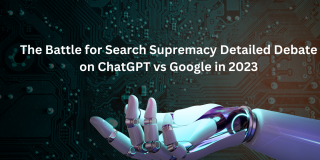Artificial Intelligence (AI) has rapidly become a powerful tool that permeates numerous aspects of our daily lives.
From virtual assistants in our smartphones to autonomous vehicles, AI technology has transformed industries across the globe.
In the realm of education, AI-powered chatbots like ChatGPT have started to make an impact, assisting students, teachers, and administrators alike.
However, as the Canadian government delves into the realm of AI, a critical question arises: should AI bots like ChatGPT be banned from Canadian schools?
The Potential of AI Bots in Education:
AI bots, such as ChatGPT, offer unique opportunities to enhance the educational experience. These intelligent systems have the potential to provide personalized learning experiences, assist with administrative tasks, and even offer support to students with special needs.
The ability of AI bots to quickly analyze vast amounts of data and provide instant feedback can significantly augment the learning process, leading to improved academic outcomes.
Addressing Concerns:
Despite the benefits, concerns have arisen regarding the integration of AI bots in Canadian schools. Some argue that reliance on AI technology might hinder students’ critical thinking and interpersonal skills.
Additionally, there are concerns about data privacy and the potential for biases within AI algorithms. Skeptics worry that AI bots may replace human educators, leading to a dehumanized and less empathetic learning environment.
The Role of the Canadian Government:
Recognizing the significance of AI in education, the Canadian government is actively examining the role of AI bots in schools.
While a complete ban on AI bots seems unlikely, regulatory measures may be put in place to ensure ethical use and mitigate potential risks.
The government aims to strike a balance between leveraging AI’s benefits and addressing the concerns raised by educators, parents, and students.
Ethics and Transparency:
One crucial aspect of integrating AI bots in schools is ensuring ethical guidelines and transparency. It is essential for developers and educational institutions to prioritize the fair and unbiased design of AI algorithms.
Transparent disclosure of AI’s limitations and capabilities is also crucial to prevent overreliance and foster critical thinking skills among students.
Fostering Human-AI Collaboration:
Rather than perceiving AI bots as competitors to human educators, it is vital to view them as collaborative tools.
By leveraging AI’s capabilities, teachers can have more time and resources to focus on individualized instruction, mentorship, and fostering interpersonal skills.
Human-AI collaboration can create a synergistic educational environment that maximizes the potential of both educators and AI bots.
Conclusion:
As the Canadian government continues to navigate the integration of AI in education, the future of AI bots like ChatGPT in Canadian schools remains uncertain.
Balancing the potential benefits of AI technology with the need for ethical guidelines, privacy protection, and human-centered education is a complex task.
However, by fostering collaboration between humans and AI, we can harness the transformative power of AI bots to create an inclusive, personalized, and engaging learning experience for Canadian students.





 Case studies
Case studies Career
Career